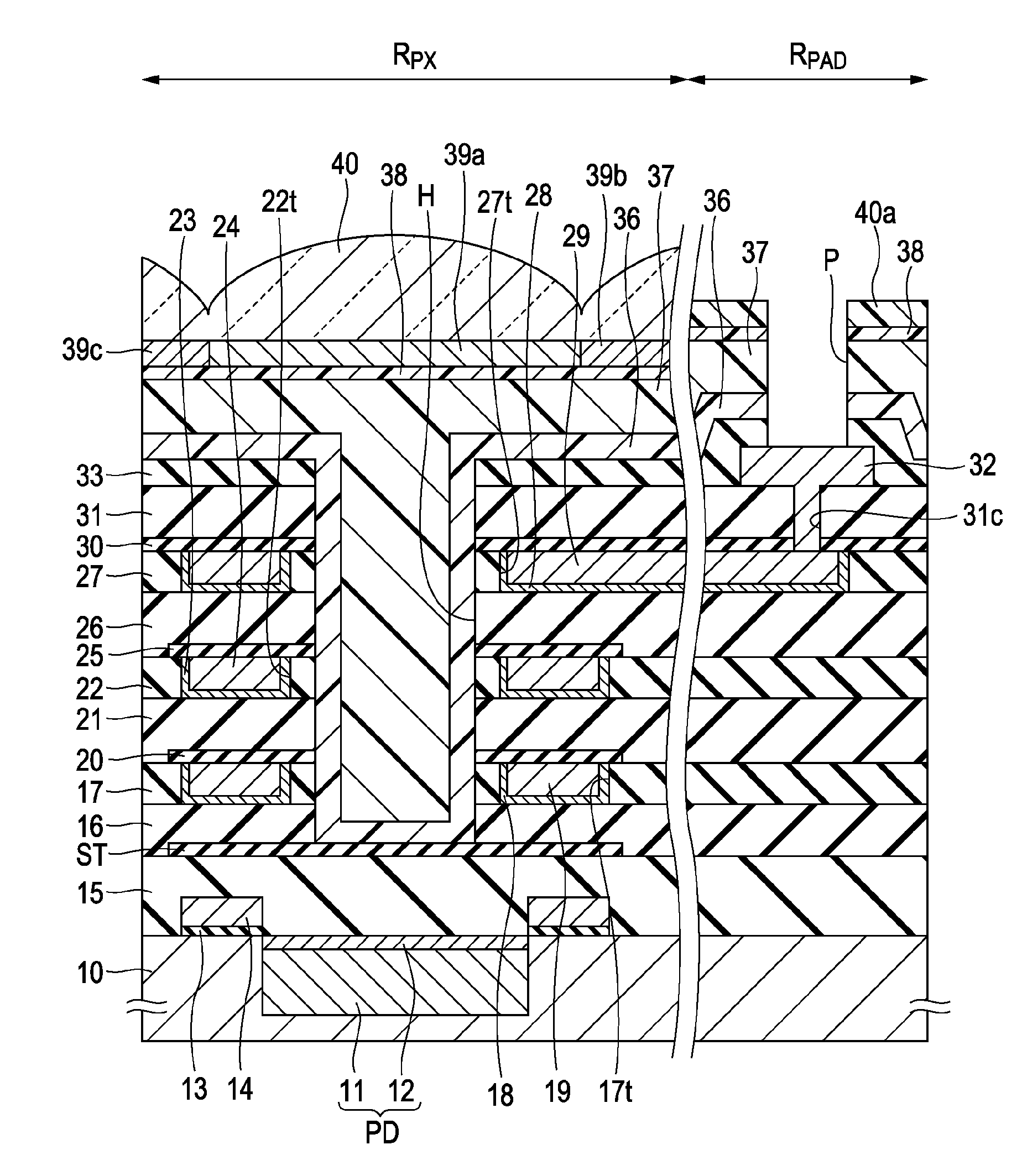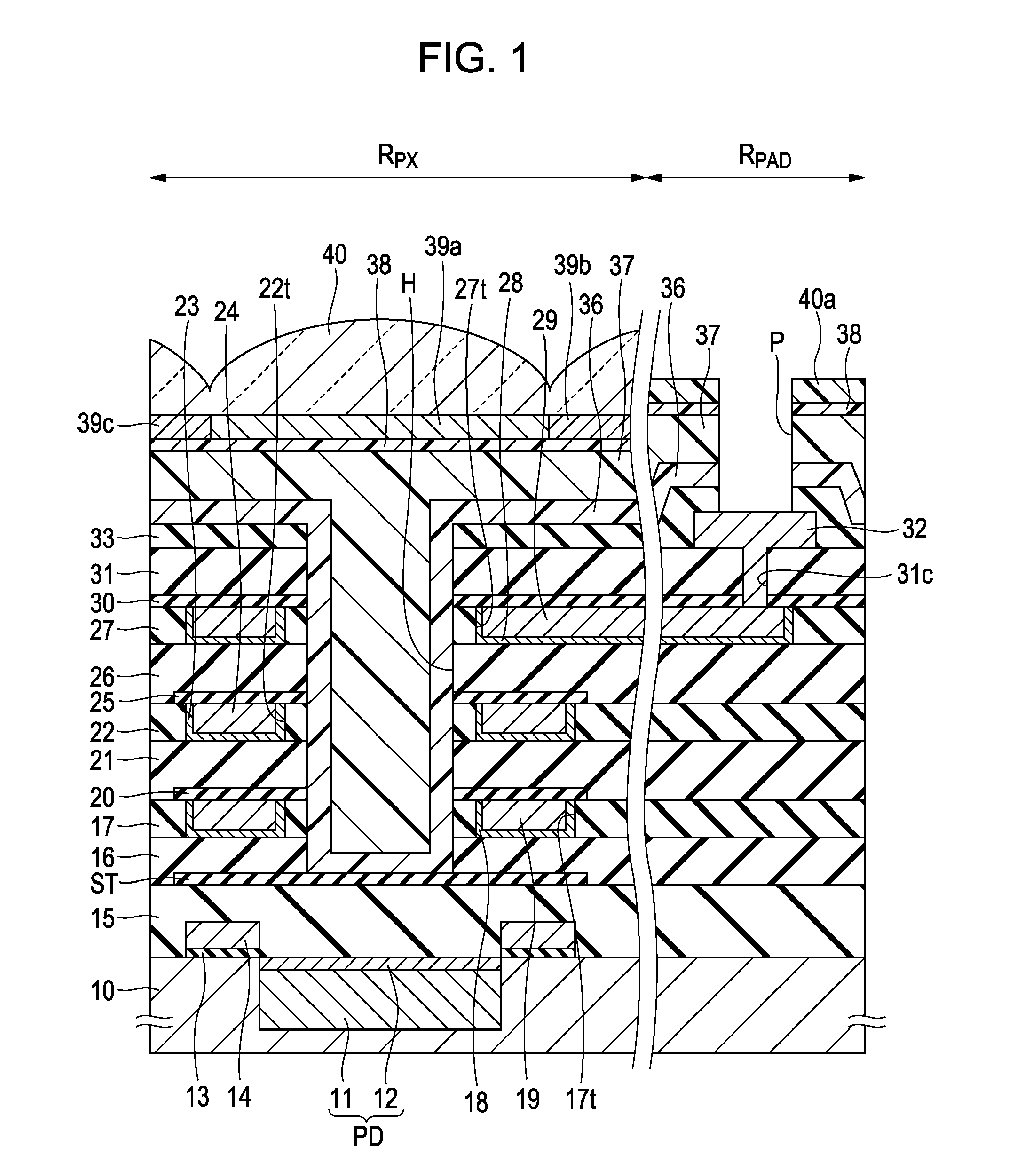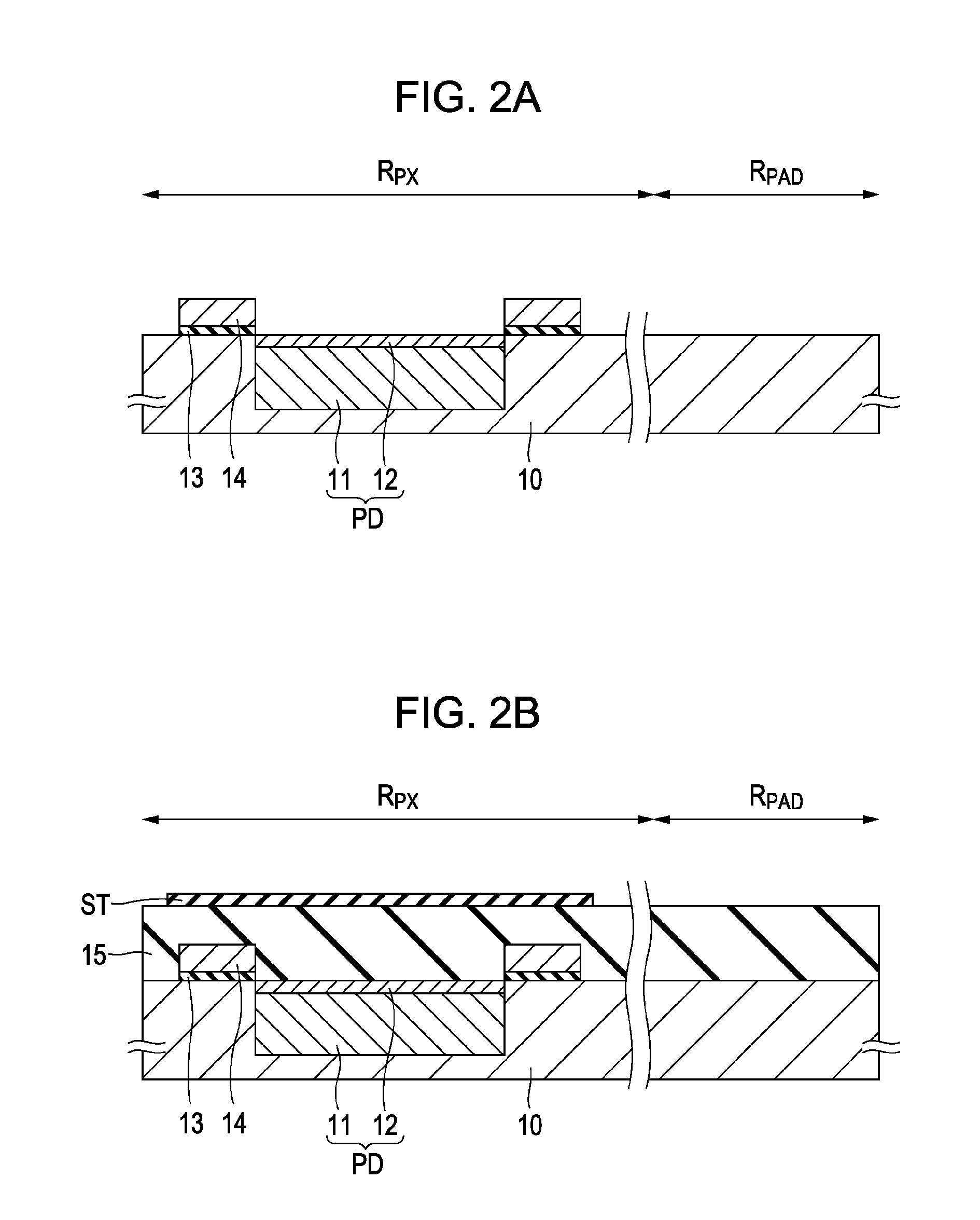Solid-state image pickup device and electronic apparatus
- Summary
- Abstract
- Description
- Claims
- Application Information
AI Technical Summary
Benefits of technology
Problems solved by technology
Method used
Image
Examples
first embodiment
[0040]FIG. 1 is a schematic cross-sectional view of a CMOS sensor which is a solid-state image pickup device including a plurality of pixels according to this embodiment, and shows a pixel region RPX and a pad electrode region RPAD.
[0041]For example, in the pixel region RPX serving as a light-incident surface, an n-type charge accumulation layer 11 and a p+-type surface layer 12 serving as its surface layer are formed in a p-well area of a semiconductor substrate 10 in each of the pixels, thereby forming a photodiode PD having a pn junction. A gate insulating film 13 and a gate electrode 14 are arranged adjacent to the photodiode PD on the semiconductor substrate.
[0042]For example, a signal reading section including floating diffusion and a CCD charge transfer channel is arranged on the semiconductor substrate, the signal reading section being configured to read a signal charge or a voltage in response to a signal charge generated and accumulated in the photodiode PD. Thereby, the a...
example 1
[0114]According to the first embodiment, a CMOS sensor (a) having the structure in which the etching stopper film ST was located as close as possible to the semiconductor substrate to reduce the distance between the photodiode and the optical waveguide was produced. Here, the passivation film was composed of SiN.
[0115]A CMOS sensor (b) was produced as in the CMOS sensor (a), except that the etching stopper film was not formed and that the trench to be formed into an optical waveguide was formed so as to reach the first diffusion preventing film.
[0116]Sensitivities of the CMOS sensors were measured. FIG. 8 shows the results.
[0117]FIG. 8 shows plots of the sensitivities of the CMOS sensors (a) and (b) against the F number.
[0118]The sensitivity of the CMOS sensor (a) was 10% to 30% larger than that of the CMOS sensor (b) in the entire range of the F number. The results demonstrated that a reduction in the distance between the photodiode and the optical waveguide by locating the etching...
example 2
[0119]According to the first embodiment, a CMOS sensor (a) having the structure in which the etching stopper film ST was located as close as possible to the semiconductor substrate to reduce the distance between the photodiode and the optical waveguide was produced. Here, the passivation film was composed of SiN.
[0120]A CMOS sensor (b) was produced as in the CMOS sensor (a), except that the passivation film was composed of SiON.
[0121]A CMOS sensor (c) was produced as in the CMOS sensor (a), except that the etching stopper film was not formed and that the trench to be formed into an optical waveguide was formed so as to reach the first diffusion preventing film.
[0122]Color mixing ratios of the CMOS sensors were measured. FIG. 9 shows the results.
[0123]FIG. 9 shows plots of the color mixing ratios of the CMOS sensors (a), (b), and (c) against the incident angle.
[0124]The color mixing ratios of the CMOS sensors (a) and (b) were lower than that of the CMOS sensor (c). The results demons...
PUM
 Login to View More
Login to View More Abstract
Description
Claims
Application Information
 Login to View More
Login to View More - R&D
- Intellectual Property
- Life Sciences
- Materials
- Tech Scout
- Unparalleled Data Quality
- Higher Quality Content
- 60% Fewer Hallucinations
Browse by: Latest US Patents, China's latest patents, Technical Efficacy Thesaurus, Application Domain, Technology Topic, Popular Technical Reports.
© 2025 PatSnap. All rights reserved.Legal|Privacy policy|Modern Slavery Act Transparency Statement|Sitemap|About US| Contact US: help@patsnap.com



